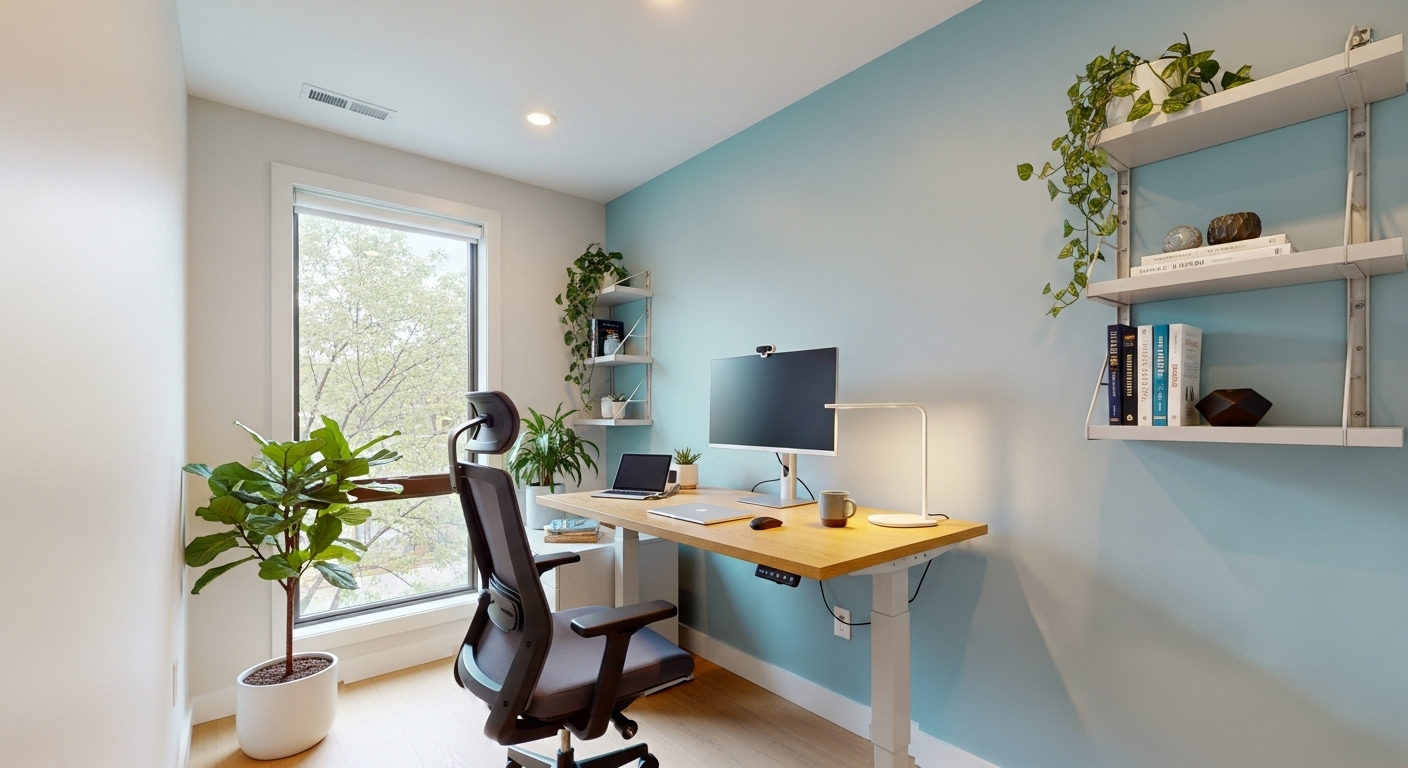The great migration to remote work promised a revolution in work-life balance. We traded commutes for coffee makers and cubicles for couches, envisioning a future of unparalleled freedom. Yet, for many modern professionals, this dream has morphed into a digital cage. The lines between office and home have not just blurred; they have evaporated, leading to a pervasive sense of being ‘always on.’ This constant connectivity, while boosting productivity for some, has created a significant challenge: how do we build a rich, fulfilling life when our primary space is also our workplace? This article moves beyond productivity hacks and home office setups to address the core of sustainable remote work life. We will explore actionable strategies for reclaiming your time, combating digital isolation by forging real-world connections, and intentionally designing a lifestyle that flourishes long after you log off for the day. It’s time to stop surviving your remote job and start thriving in your remote life.
Reclaiming Your Time: The Myth of the Always-On Remote Worker
The flexibility of remote work is often its most celebrated benefit, but it conceals a dangerous paradox. Without the physical separation of an office, the workday can easily bleed into personal time, creating an environment where employees feel perpetually tethered to their work. Studies have consistently shown that remote workers often log more hours than their in-office counterparts, contributing to a sharp rise in burnout and digital fatigue. The ‘flexibility paradox’ is the phenomenon where the autonomy to choose one’s hours results in working more, not less. This is driven by a combination of ‘presence culture’—the need to appear available and responsive online—and the lack of clear environmental cues, like colleagues packing up, that signal the end of the day. To counter this, professionals must proactively architect their time. This begins with setting non-negotiable ‘hard stops.’ Treat the end of your workday like a critical appointment you cannot miss. Use calendar blocks not just for meetings, but for personal activities like exercise, family time, or hobbies, giving them the same weight as a professional commitment. Furthermore, establishing clear communication protocols with your team about availability is crucial. Stating your working hours in your status or email signature can manage expectations and reduce the pressure to respond instantly outside of those times. The goal is to shift the mindset from being ‘always on’ to being ‘productively on’ during designated hours, allowing you to fully disengage and reclaim the personal time that remote work was meant to liberate.
Building Your Third Place: The Importance of Community Hubs
Sociologist Ray Oldenburg coined the term ‘third place’ to describe the vital social environments separate from the two primary ones of home (the ‘first place’) and work (the ‘second place’). These are places like cafes, libraries, parks, and community centers where people can gather, connect, and build relationships. For remote workers, this concept has become more critical than ever. When home becomes the office, the first and second places merge, eliminating a crucial layer of social interaction and creating a vacuum of community. The spontaneous conversations and casual acquaintances formed in a traditional work environment vanish, often leading to profound feelings of isolation. Actively seeking out or creating a third place is an essential strategy for maintaining social health. This doesn’t necessarily mean joining a coworking space, which can sometimes feel like just another office. It’s about finding a location where the primary purpose is social connection or personal enrichment, not work. Consider joining a local sports league, a book club, a volunteer group, or a gym that offers group classes. Make it a routine to visit a specific coffee shop at the same time a few days a week, fostering familiarity with the staff and other regulars. These spaces provide a neutral ground for interaction, helping to rebuild the social fabric that remote work can unravel. They offer a change of scenery that stimulates creativity and a sense of belonging to a local community, grounding you in a physical reality beyond your screen.
The Digital Detox Dilemma: Strategies for Meaningful Screen-Free Time
In a remote work reality, our screens are our lifelines—portals to our colleagues, our projects, and our professional identity. This constant engagement, however, comes at a cost to our mental and emotional well-being. The ‘digital detox’ is no longer a trendy buzzword but a necessary practice for cognitive restoration. The challenge lies in making this disconnection meaningful and sustainable. Simply turning off your laptop is not enough if you immediately switch to scrolling on your phone. True digital detox involves engaging in activities that are fundamentally analog. Rediscovering physical hobbies is a powerful antidote to screen fatigue. Activities like gardening, painting, woodworking, playing a musical instrument, or cooking a complex meal engage different parts of the brain and provide a tangible sense of accomplishment that digital tasks often lack. These pursuits are immersive and demand your full attention, making it easier to forget the endless stream of notifications. Scheduling dedicated ‘no-screen’ blocks into your week is another effective strategy. This could be a screen-free Sunday, or simply the first and last hour of every day. Use this time for reading a physical book, going for a walk without your phone, or simply sitting in quiet contemplation.
As Cal Newport, author of ‘Digital Minimalism,’ argues, “The solution isn’t to simply get rid of your devices, but to cultivate a thoughtful and intentional relationship with them.”
By consciously choosing analog over digital, you create space for your mind to wander, to be creative, and to reconnect with yourself and the physical world around you, which is fundamental for long-term mental clarity and happiness.
Designing Your Sanctuary: Optimizing Your Home for Life, Not Just Work
When your home is your office, creating psychological boundaries is just as important as setting a work schedule. The human brain relies heavily on environmental cues to switch between different modes of thinking and being. If your dining table doubles as your desk and your bedroom corner is your conference room, your brain never truly receives the signal to ‘switch off’ from work. This is why intentionally designing your home for both work and life is a cornerstone of remote well-being. The ideal scenario is a dedicated office with a door you can physically close at the end of the day. However, for those in smaller living spaces, ‘zoning’ becomes key. Use visual cues to delineate your workspace. This could be as simple as a specific rug under your desk, a portable screen to hide your setup after hours, or a dedicated lamp that is only on during work time. The ritual of setting up and breaking down your workspace each day can be a powerful psychological trigger. Packing away your laptop, papers, and work-related items into a box or cabinet at 5 PM sends a clear message to your brain: work is over. Beyond the workspace, focus on optimizing the rest of your home for relaxation and life. Ensure your living room is a comfortable, inviting space free of work clutter. Make your bedroom a tech-free zone to improve sleep quality. Pay attention to lighting and scent; use warmer, softer lighting in the evenings and consider calming scents like lavender or chamomile to create a relaxing atmosphere. By curating distinct environments for work and for life within the same four walls, you build the necessary psychological partitions to protect your personal time and mental peace.
Forging Local Connections: How to Root Yourself in Your Community
One of the most significant challenges for remote professionals, especially those who have relocated for lifestyle reasons, is the struggle to build deep community roots. Without a central office to anchor them, they can feel like tourists in their own towns. Overcoming this requires a deliberate and proactive effort to embed oneself in the local fabric. The first step is to shift your mindset from a passive resident to an active participant. Start by frequenting local businesses—the independent coffee shop, the neighborhood bakery, the family-owned bookstore. Becoming a regular face creates micro-interactions that build a sense of familiarity and belonging. Go deeper by engaging with community-focused organizations. Volunteer for a local cause you care about, whether it’s an animal shelter, a community garden, or a local arts festival. This not only connects you with like-minded individuals but also gives you a tangible stake in the well-being of your community. Join groups centered around shared interests. Platforms like Meetup or local Facebook groups are excellent resources for finding everything from hiking clubs and board game nights to coding workshops and language exchanges. These activities provide a structured and low-pressure environment to meet new people outside of a work context. Forging these local connections is a powerful antidote to the placelessness that can accompany remote work. It grounds you, provides a support system, and enriches your life with diverse perspectives, ensuring your identity is defined by more than just your job title.
The Power of Ritual: Creating Personal Ceremonies to Start and End Your Day
For centuries, humans have used rituals to mark transitions, create meaning, and provide structure. In the absence of a daily commute, which served as a natural buffer between work and home, remote workers must invent their own transition rituals. These personal ceremonies are more than just routines; they are intentional practices that help the mind and body shift gears. A ‘startup ritual’ prepares you for the workday ahead. Instead of rolling out of bed and immediately opening your laptop, create a 15-30 minute buffer. This could involve stretching, meditating, journaling, or taking a short walk around the block—a ‘fake commute.’ This practice allows you to enter the workday with intention and focus, rather than in a state of reactive urgency. Even more crucial is the ‘shutdown ritual.’ This is a consistent sequence of actions that signifies the definitive end of the workday. It could be a simple checklist: review tomorrow’s schedule, clear your desk, close all work-related tabs, and say a specific phrase to yourself like ‘work is now complete.’ As psychologist and author Adam Grant suggests, a clear shutdown ritual has been shown to reduce work-related stress in the evenings and improve detachment. This act of closure is vital for preventing work thoughts from intruding on your personal time. Following the shutdown ritual with a rewarding activity—like playing with your kids, cooking, or calling a friend—reinforces the transition. By bookending your day with these powerful, personal ceremonies, you create the clear psychological boundaries necessary to be fully present in both your professional and personal lives, preventing the two from becoming an indistinguishable blur.
In conclusion, thriving in the world of remote work requires a conscious shift in perspective. It’s not about finding the perfect productivity app or the most ergonomic chair; it’s about architecting a life. The true measure of success in a remote career is the richness of the life you build around it. By reclaiming your time from the ‘always-on’ culture, you give yourself the space to live. By building a ‘third place,’ you combat isolation and weave yourself into the vibrant tapestry of your local community. Through meaningful digital detoxes and intentional home design, you create sanctuaries for both focus and rest. These strategies—reclaiming time, building community, detoxing digitally, optimizing your space, forging local connections, and leveraging personal rituals—are the pillars of a sustainable and fulfilling remote existence. They empower you to move beyond the work bubble and cultivate a holistic identity. The future of work is not just about where we work, but how we live. The ultimate freedom that remote work offers is the opportunity to intentionally design that life, one login—and one log-off—at a time. It’s a chance to build not just a career, but a life by design, full of connection, purpose, and well-being.





